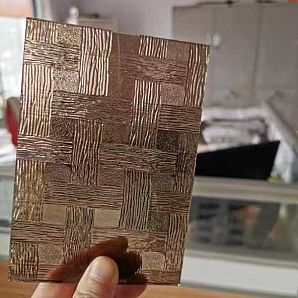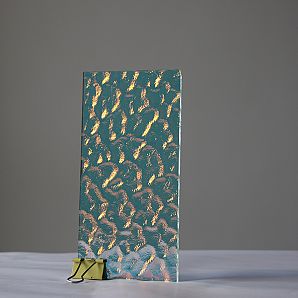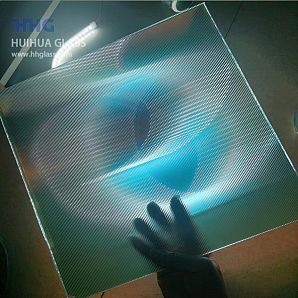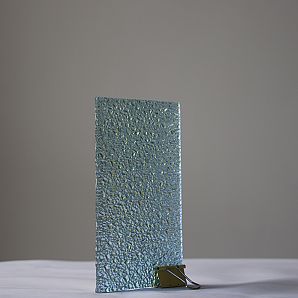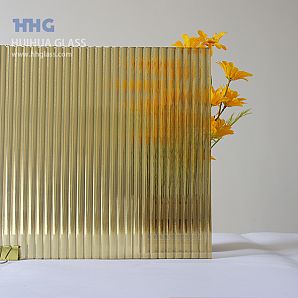Glass is a widely used inorganic non-metallic material with a wide range of applications. It can be used in architecture, daily use, art, instrumentation and other fields, and has a very rich variety. In addition to commonly used tempered glass, printed glass, there are optical glass, dimming glass and other types of high technical requirements. In this article, we will introduce the possible composition of black impurities in glass and highlight how glass is dyed.
I. What are the black particles inside the glass?
Need to know what glass, glass is divided into float, super white, utensils, bottles and other products, if you consult the float glass, which contains black material, should be impurities;
Metal impurities, iron, chromium, nickel and other metals, welding rods, aluminium alloys, and other metals;
Non-metallic impurities, ceramics, cement, stone, concrete and other impurities;
Carbon particle residue, that is, carbon powder or coal powder residue added in the process of heating glass to regulate atmosphere;
Residual carbon from incomplete combustion of heated glass burners;
Ash produced during combustion of combustibles.
2. Why do glass have so many colours?
Ordinary glass is made by melting quartz sand, soda ash and limestone together. It is a mixture of unstable silicates. The glass that people first made is a small piece of glass with poor transparency and some colours. Its colour is not the result of conscious addition, but of impurities in the raw materials used. At that time, the coloured glass was only used. Decorations do not require much, people just accidentally produced color glass. But today we require color glass has high scientific requirements, which can only be produced after uncovering the secret of the color of glass.
After research, it is found that if 0.4-0.7% colorant is added to the ingredients of ordinary glass, the color of the glass can be increased. Most of the colorants are metal oxides. We have already known that each metal element has its unique "spectral characteristics", so different metal oxides can show different colors. If these oxides are added to the ingredients of glass, they will be given. Glass is colored. For example, when chromium oxide (Cr2O3) is added, the glass is green; when manganese dioxide (MnO 2) is added, the glass is purple; when cobalt oxide (Co2O3) is added, the glass is blue. Protective eyeglasses for steel workers and welders are made of this kind of glass.
In fact, the colour of glass depends not only on the colouring agent added, but also on the temperature of melting and the nature of furnace flame to adjust the valence of elements, so that the glass presents different colours. For example, copper in glass appears blue-green in the presence of high-valent copper oxide; red in the presence of low-valent cuprous oxide (Cu2O). Sometimes, the glass does not display well even after one melting. This is the case with precious ruby glass, which is made by adding trace gold to ordinary glass ingredients. After the first firing, gold is distributed in the form of atoms in the glass, at which time the glass does not show color; when heated again to a temperature close to softening, the gold atoms in the glass aggregate into colloidal particles, and then the glass appears. Beautiful red.
Nowadays, people use rare earth oxide as colorant to make various kinds of high-grade color glass. The color glass doped with rare earth element has bright color, bright color, and even can change color under different light. For example, neodymium oxide glass has this characteristic, it shows purple-red in sunlight, blue-purple in fluorescence, very beautiful. One kind of glass will follow the intensity of light. Weak and changing color, people use it as glasses and window glass of houses. With this kind of glass as window glass, the room can maintain a certain brightness, no longer need to use curtains to shade the sun, so some people call it "automatic curtain". It can also block the passage of ultraviolet rays in the sun. After the library library and Museum are equipped with this kind of glass, books and cultural relics can be protected. Ultraviolet damage.
In addition to rare earth elements, tungsten and platinum can be directly added to glass to make discolored glass.
HHG is a professional glass manufacturer and glass solution provider include range of tempered glass, laminated glass, textured glass and etched glass. With more 20 years development, there are two produce lines of pattern glass ,two lines of float glass and one line of restoration glass. our products 80% ship to overseas, All our glass products are strict quality control and carefully packed in strong wooden case, ensure you receive the finest quality glass safety in time.
More Detail: www.hhglass.com

